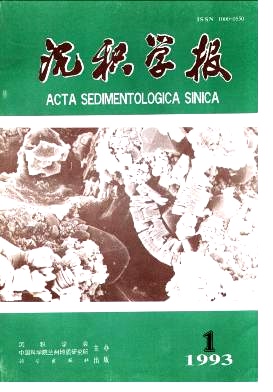Study on the Modern Sedimentation Rate Through 210Pb Age Dating, Liaodong Bay
- Received Date: 1991-01-03
- Publish Date: 1993-03-10
Abstract: This paper reports the sedimentation rate determined by the 210Pb age dating based on the cores sampled from 10 stations in Liaodong Bay. Sampling was taken by using of core sampler in the central area and heavy-bore gravity core sampler and natural profile sampling in shallow water area and tideflat. More samples of upper part and less of the lower were analysed and determined, variation of 210Pb activity with depth, sedimentation rates and sedimentation flux of every station were listed, the result shows that except B841 station, the distribution of 210Pb activity decrease exponentially with depth, indicating that both of the sedimentation rate and processe were in relative stable period in recent 100 years. The distribution of sedimentation rate and flux reveals that the highest value of sedimentation rate is in the bay tip and decrease with increasing water depth southwestward, reaches its lowest value in B73 area and then get a slightly rebound. This pattern is contributed to the marine dynamics, geomorphological form, especially the difference of sediment input. The water-sand of Liaodong Bay tip stream system mainly deposited in the north area of B73 stati n. But in the south area of B73 station, water-sand is multiplly controlled by Luanhe River, Haihe River, especially the Yellow River, except for the water-sand that flows along the coast of Liaohe River. In the B386 station outside of Liaohe estuary, the distribution of 210Pb shows two decrease periods, the first is from the depth of 0-29cm and the second is under 29cm. Mereover, the sedimentation rate of the early period (0.71cm/ a) is greater than that of modern (0.54cm/ a), indicating that a sedimentation event had been taken place in this area. Based on the sedimentation flux analysis of the first line segment of 210Pb decay curve, it is calculated out that the first turn point, i.e., when the sedimentation event took place, was occurred during the years 1900-1910. This time period is conincided with one of the history case of Liaohe River. In the Shuangtaizihe Riverthat situates in the lower part of Liaohe River, there had been done artificial branch stream in late nineteenth century, let to the cut down of runoff and sand input to sea of Liaohe river mouth at Yingkou. The reducing of material sources of Liaohe river resulted in the decrease of modern sedimentation rate of Liaohe Bay. The 210Pb distribution curve of B386 proved the influence on the modern sedimentation rate by human activityes. The above mentioned study are rather important to the research of marine sedimentology, shallow sea exploitation, environmental background and pollution history.
| Citation: | Yang Songlin, Liu Guoxian, Do Ruizhi, Zhang Bing. Study on the Modern Sedimentation Rate Through 210Pb Age Dating, Liaodong Bay[J]. Acta Sedimentologica Sinica, 1993, 11(1): 128-135. |






 DownLoad:
DownLoad: